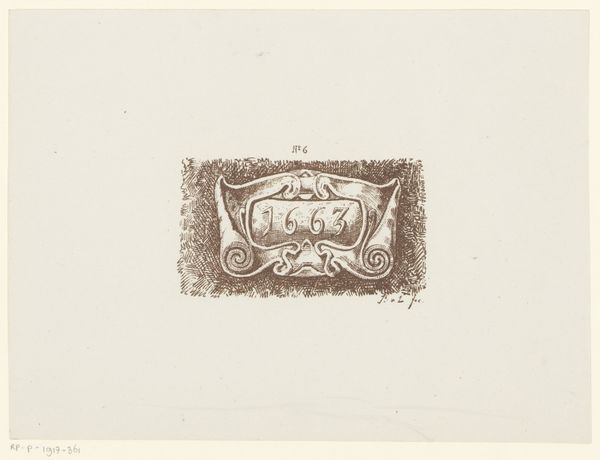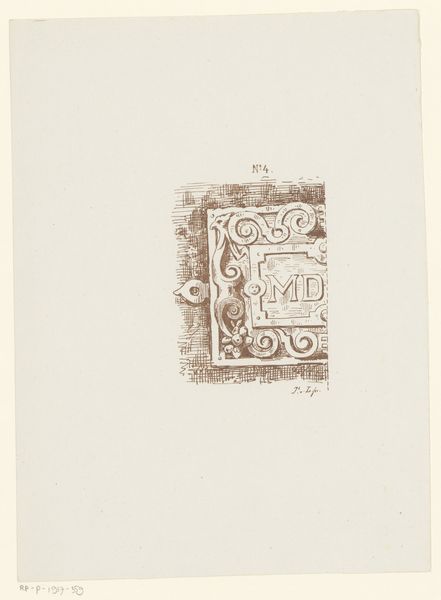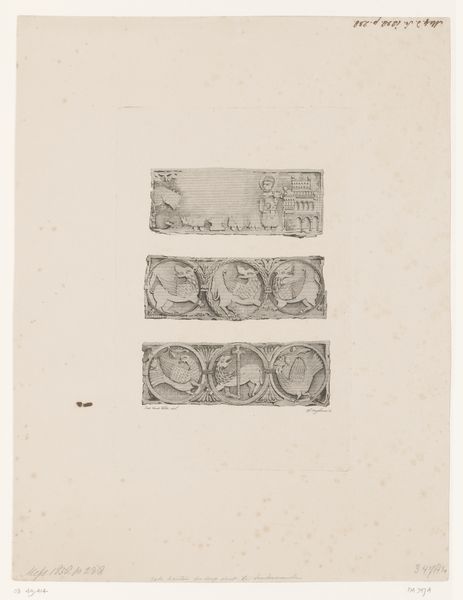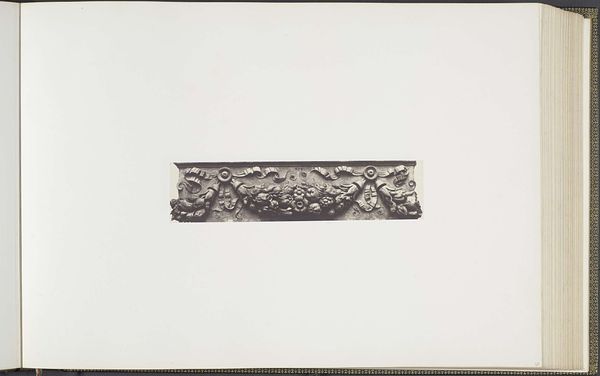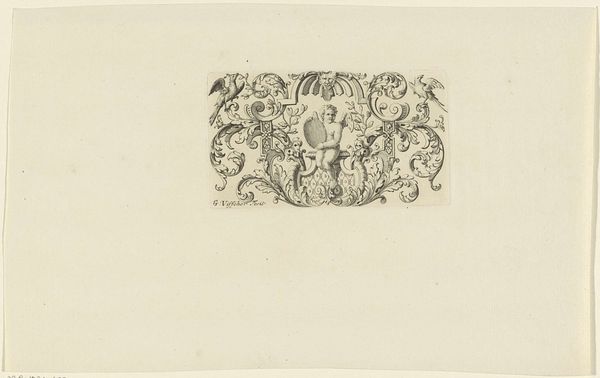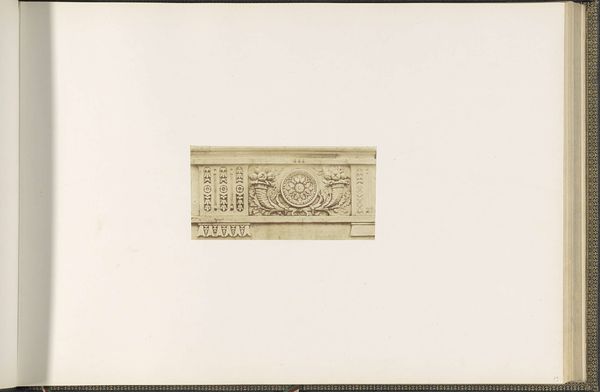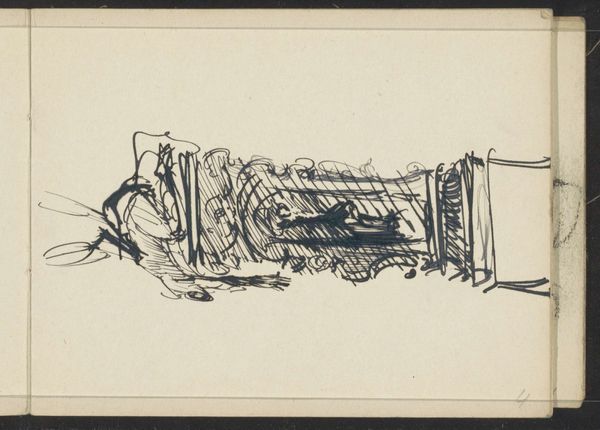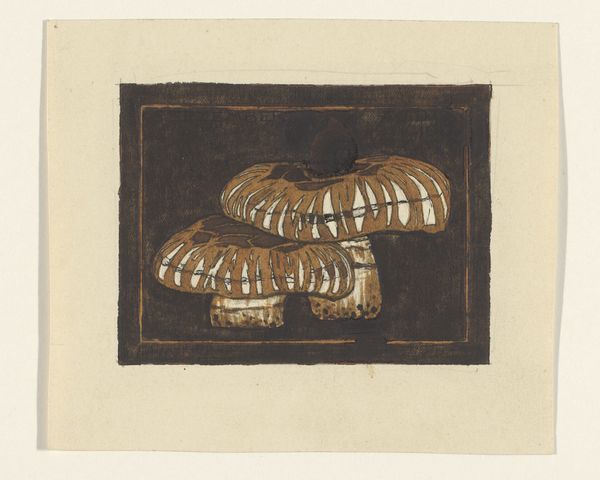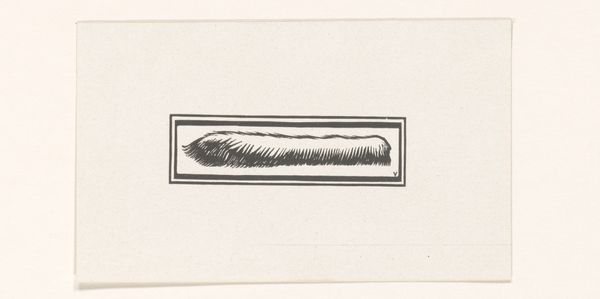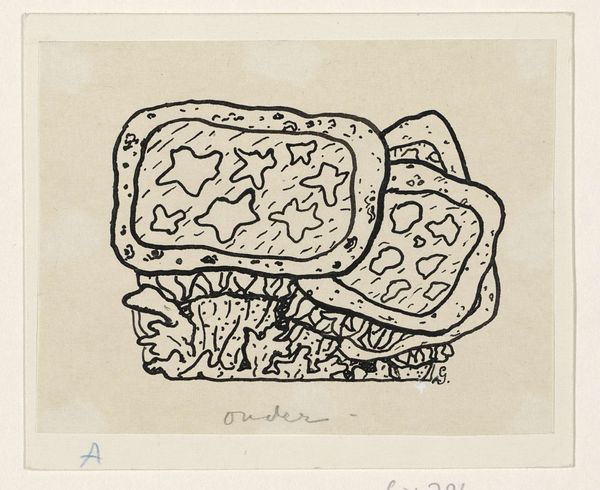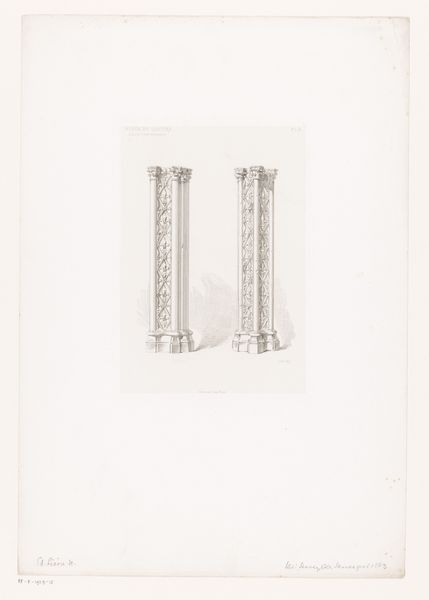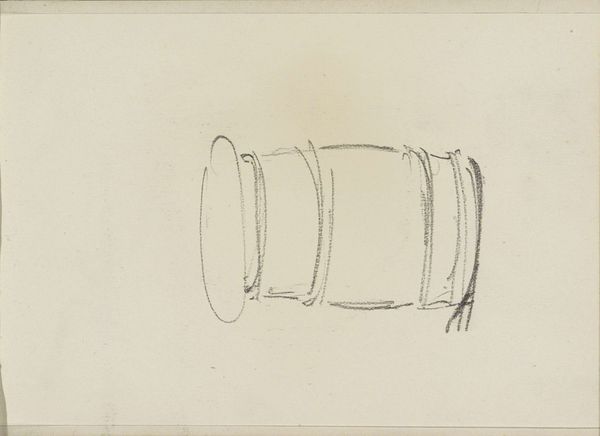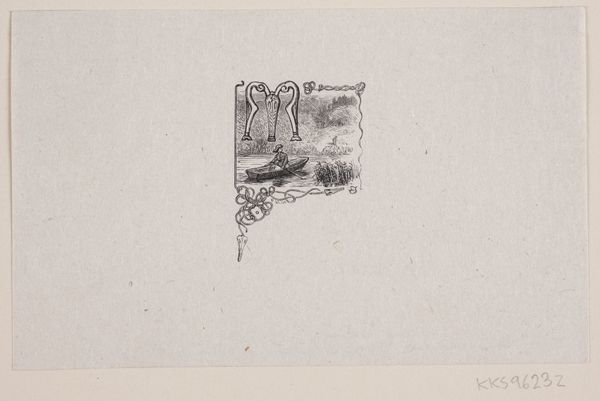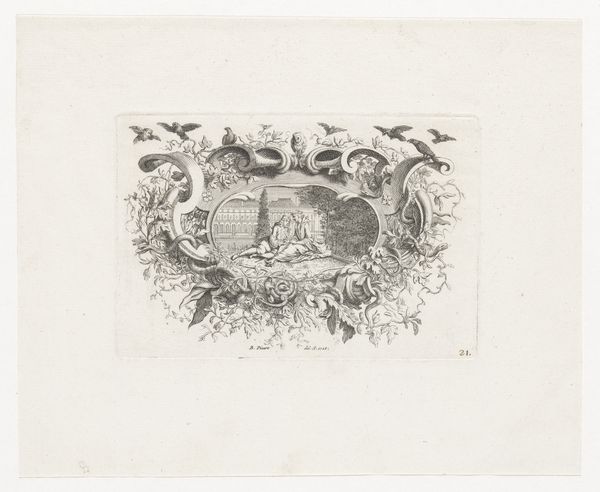
drawing, graphic-art, print, ink, engraving
#
drawing
#
graphic-art
#
blue ink drawing
# print
#
old engraving style
#
ink
#
geometric
#
line
#
engraving
Dimensions: height 205 mm, width 275 mm
Copyright: Rijks Museum: Open Domain
Curator: Here we have Jac van Looij’s "Cartouche met het jaartal 1670," an engraving created between 1877 and 1894. It's a striking example of detailed line work, isn’t it? Editor: Yes, my first impression is of its almost obsessive detail; that level of precision lends an austere formality to a piece so small. It looks like an elaborate emblem for something important. Curator: The interesting thing about this piece is its creation date. Although Looij was active in the late 19th century, this engraving looks like it originates from the very year inscribed on it: 1670. Think about the artistic revivals popular during this period; the engraver could very well have sought to invoke the aesthetic sensibilities of an earlier era. Editor: Absolutely. I am intrigued by how the engraver has achieved depth. Notice the darker hatching used around the frame. These areas create shadow and give volume to the central form of the cartouche. The swirls, leaves, and fine details are exquisitely rendered, almost creating an impression of tactile bas-relief. Curator: Indeed, this revival aesthetic held significant social value. These meticulous depictions of the past were part of a wider trend that emphasized history and national identity. Editor: Beyond historical trends, let's think about composition. The balanced symmetry—a core principle of formal design—grounds the eye. See how the artist contrasts textures with smooth and rough strokes; that elevates what might have otherwise become a bland study of lines. Curator: Right, but what do you make of its context? I am very curious about its intended function or role within the broader artistic output of Looij, particularly given its specific historical reference. Was it a preparatory sketch for a larger commission or merely an exercise in historical style? These details are essential to understand. Editor: Regardless, the meticulous method allows the engraving to transcend function by taking on something far more important than representation: pure artistry that allows this to evoke a certain elegance that resonates regardless of function or utility. Curator: I suppose that highlights why art continues to be valuable both as aesthetic achievement and historical record. Editor: Precisely. It’s a testament to the lasting power of form.
Comments
No comments
Be the first to comment and join the conversation on the ultimate creative platform.
